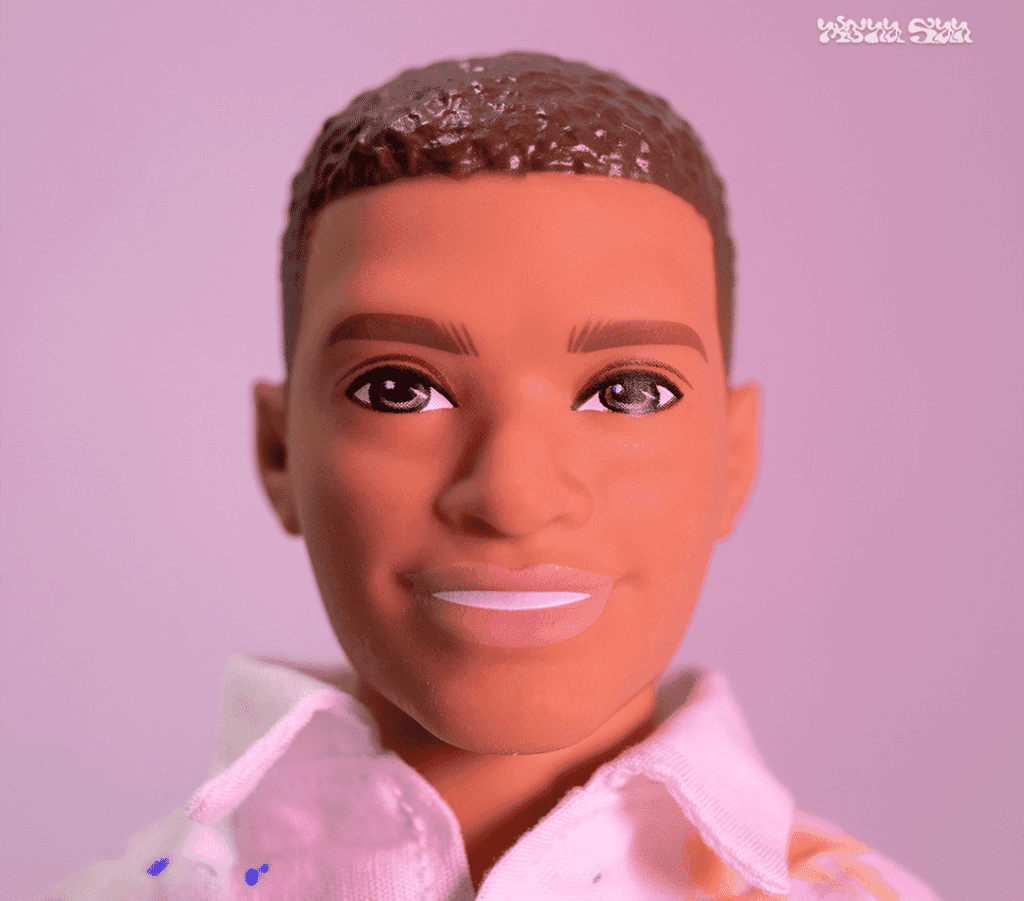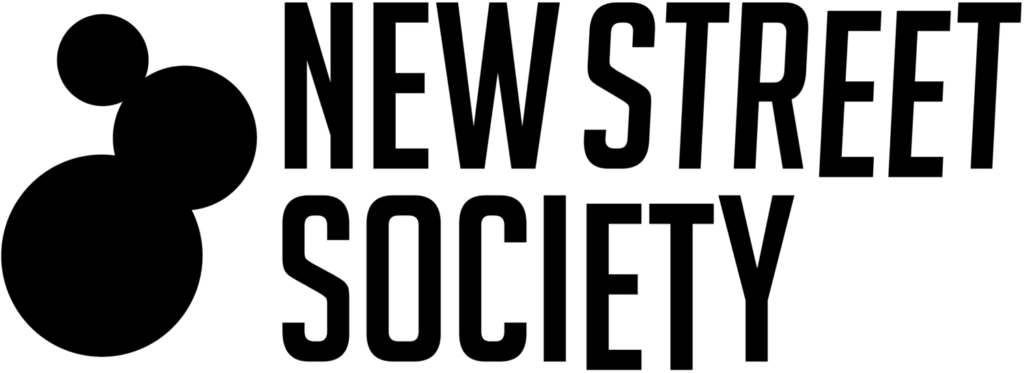Take A Look Inside MONA SAN's 'BRAIN CHILD' EP [Interview] – FUXWITHIT

Weeks ago I was lazily lurking on SoundCloud during my night shift when something unexpected broke the monotony of the feed, reigniting my wavering attention. An EP with a Ken-like flashy doll as cover art and titled BRAIN CHILD (written in caps lock as well as all the tracks’ titles). As sleepy as I was at that moment, I wasn’t very inclined in diving into something so flashy, but something in my mind convinced me to save those tracks for another moment. Best decision ever. Those apparent weird tunes came out to be one of the most interesting EPs in the entire year. One of those that you not only listen to over and over again but that involve you in a clear, original, convincing multisensory narrative, about which you want to know more and more.
MONA SAN – this is the name of the French producer, who has not only produced an EP, but has created an entire BRAIN CHILD concept that also comes to life through physical objects, toys, clothes as well as music. The more I explored this fancy, colorful eccentric world, the more I wanted to know the how and why of what I was hearing and seeing. To give vent to this desire for knowledge, I’ve reached out MONA SAN himself to discover the secrets behind BRAiN CHILD’s origins (thanks Baauer), aesthetic, odd songs’ length, and if there’ll more chapters of this story.
BRAIN CHILD has one of the most vivid concepts (both musically and aesthetically speaking) I’ve seen in a while. How did it all start? Tell us the whole story.
Hey, firstly thanks for this interview! BRAIN CHILD started unknowingly to me around September, when I started participating in Baauer’s Bop Battles. The goal was to create a short track from a common sample that was given to us at the beginning of the week. From that came ‘First Draft’, then ‘Lullaby’ and ‘Mama Always Told Me’ which won me 1st place. I wasn’t supposed to release these songs at all, because they didn’t seem important to me at first. I came back to them a few months later, and I quickly realized that I couldn’t find that spontaneity of creation that I had with these songs. They had been done in 1 week, in a very instinctive way. When I was working on them, I already had in mind the idea of creating like a child, in a carefree manner, without any inspiration or prejudice on what I was going to do. I wanted to find this feeling of when I created my first Lego constructions when I was 4 or 5 years old. That’s why there are a lot of stylistic mixes within the same project. So I formatted myself to create the other 4 tracks by taking 1-week maximum for each of them, including the mix and mastering. This time restraint really helped bring to life the core concept of the EP where I was able to tap into that inner child and it was a liberating experience.
What was important for me was to get in the mindset of a child that isn’t really aware of any codes or creative restrictions because they haven’t been submerged by the culture entirely.
As a music writer, the first peculiarity I noticed is clearly the length of the songs. Only two out of seven are above the two-minute limit. I think many of them could easily turn into “normal” songs, so this has to be a specific stylistic choice. How does it fit into the concept of EP?
I wanted them to look like demos, sketches, notebooks that were a little rough around the edges, hence their rather particular length. What was important for me was to get in the mindset of a child that isn’t really aware of any codes or creative restrictions because they haven’t been submerged by the culture entirely. So I wanted to do a little bit as I saw fit. It is obviously with my culture and my 22 years of experience that I created it, but I wished to get closer to this concept!
The aesthetic side of the EP is stunning. Exuberant, sparkling, iconic, not only did you create graphics/animations but the process also involved outfits, locations, physical objects. Did you realize everything by yourself or did you put together a team?
The idea came from me. I was writing the music while thinking about the concept, and the images that we were going to make. But I surrounded myself with a fantastic team that helped me realize what I had imagined. I could never have done it without their skills! My manager also helped me to push the concept, and to question certain axes which could be perfected.
If I remember correctly some of the objects seen in the videos/pictures have been up as prizes for a giveaway. Which exactly?
Yes, we gave away the phone, my bike and the T-REX! People really played along, it was great! I hand painted every toy we used and gave away, including the little matching outfit the doll & I share which you can find on the EP’s cover art.
What were your “toys” in the production of BRAIN CHILD?
My toys for this project were mainly my Poly D, which I used to create a lot of bass, layers, FXs. It’s present in absolutely all the tracks of the project. I also used a lot of Softube plugs, especially their modular synthesizer, their tape etc. I also used the Casio SK1 for some vocal processing, and other small FX. Otherwise, I still use mostly Ableton software!
The more we grow, the more we tend to forget how life was when we were children. How we used to feel and how we used to differently live the same situations we experience also as adults. During the creation of the EP, were you able to spontaneously identify yourself with the “child” point of view or was it a meticulous and calculated process in the smallest detail?
It was quite complicated to put myself in the shoes of a child at first sight, because I obviously have many inspirations, whether they are conscious or not! For example, for TREX, I really formatted myself to think about the sound a child could imagine when he plays with his plastic T-REX, destroying a city. The goal was to really get into a childish state of mind when creating each sound. That’s also why the process had to be quick, because if I took a month to make it, I would’ve thought about it too much, and have my adult perspective & worries ruin the spontaneity and fun of the child.
I really tried to go to the essential without making my tracks too busy. I wanted each element to sound “big” without having to put tons of it to make it big.
I have read various comments and articles mentioning Flume and Mura Masa as influences. Was there actually any artist you were inspired by while producing BRAIN CHILD?
Flume and Mura Masa are still huge inspirations for me right now. But on this EP, I was more inspired by TNGHT’s composition style. The result is obviously not the same, but I really tried to go to the essential without making my tracks too busy. I wanted each element to sound “big” without having to put tons of it to make it big. That’s the whole idea behind T-REX, which has very few elements. JIMMY EDGAR’s mixing and sound techniques also inspire me a lot.
Taking into account the project as a whole, I cannot avoid asking you this question. Is “Brain Child live” something you already have in store or are planning to develop? I can already imagine a stage full of toys, balloons and telephones and you playing on a bouncy castle and let me say, it would be so freaking cool!
We’re actually conceptualizing that right now! We’re already trying to give this EP a second life, so that it can be alive on stage without repeating itself. We already have some concepts with some of the things you mentioned!
I know this is usually the first question but anyway. Who is Mona San?
Mona San is a 22 year old guy called Julien who comes from the South of France, more precisely from Cuers. He makes music every day, and tries to create new things with each new session he does! He’s really looking forward to playing live whenever he can, producing music with and for great people, and have fun. He also thanks you very much for this great interview, thanks FUXWITHIT 🙂
You can follow MONA SAN here and support BRAIN CHILD on your favorite platform here.





